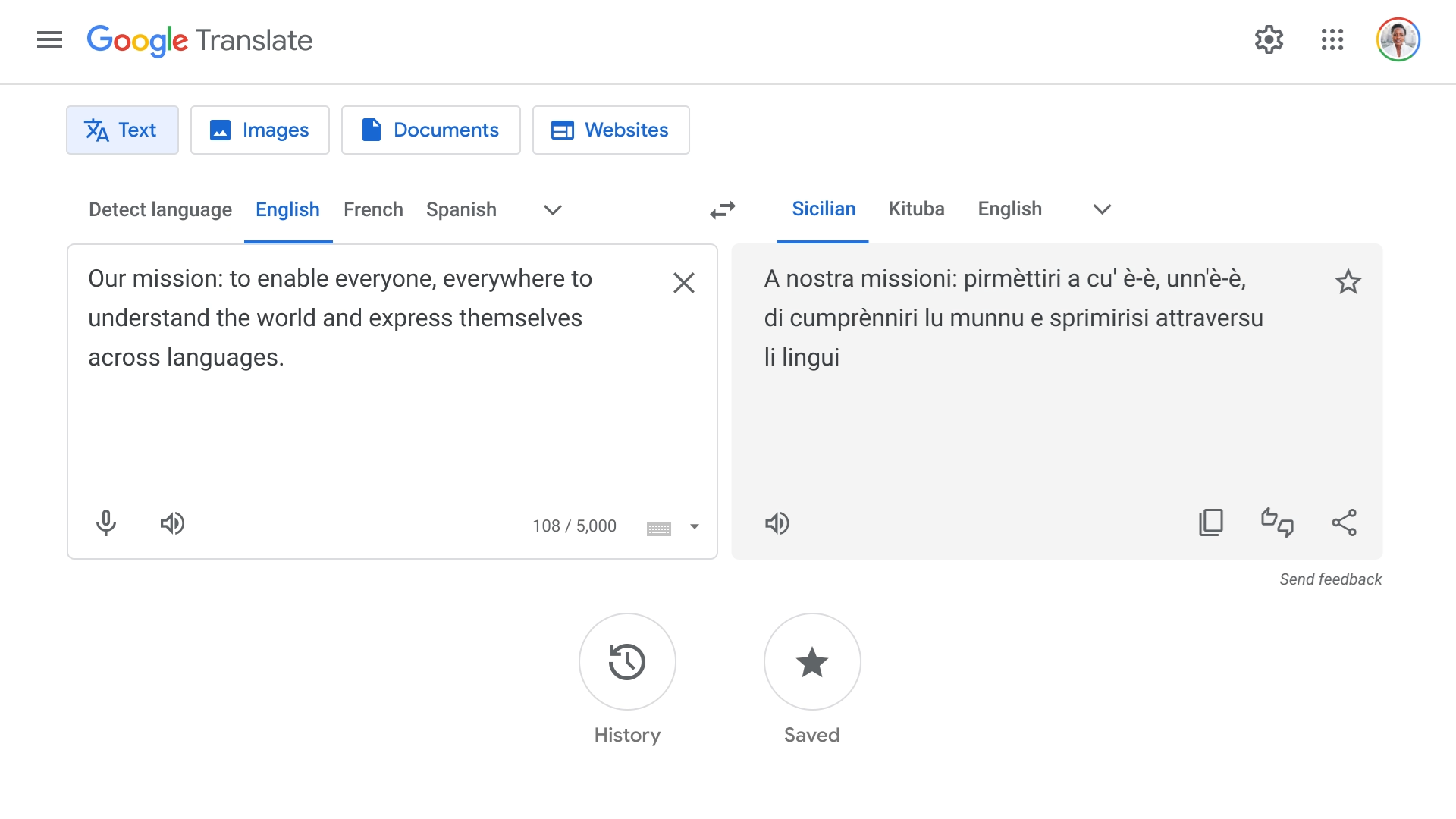Forget Duolingo – Google Translate just got a massive AI upgrade that gives it over 100 new languages
Sicilian, Cantonese, Manx, and tons of dialects and creoles added to the platform

Google Translate is adding 110 new languages to its library, the largest expansion ever made to the platform. The update leverages Google's PaLM 2 large language model, an artificial intelligence tool that helps accurately translate across a wider array of languages than before. Those languages are spoken by approximately 614 million people, or about 8% of the global population.
The list includes some widely spoken tongues, dialects, and languages that are native to smaller communities. Notably, African languages saw their biggest expansion, with Fon, Kikongo, Luo, Ga, Swati, Venda, and Wolof joining the list. On the other end of the spectrum, Cantonese is likely one of the most widely spoken languages on the new list, as is Punjabi (Shahmukhi), the most spoken language in Pakistan.
There's also the Sicilian version of Italian, Manx, a Celtic language spoken on the Isle of Man that nearly went extinct, and a Papua New Guinea creole called Tok Pisin.
PaLM 2 Talk
For languages that blend regional dialects and different spelling standards, Google goes for something that might be best understood by most people, as with the Romani language offered by Google Translate, which includes three different dialects.
The PaLM 2 LLM made the update possible, enhancing Google Translate's ability to learn and shift between languages efficiently. This model is particularly adept at handling languages that are closely related, like Awadhi and Marwadi, to Hindi or the various French creoles. PaLM 2's advanced capabilities allow it to manage the nuances and variations within these languages, providing more accurate and culturally relevant translations.
The application of PaLM 2 to Google Translate is also interesting due to its origins as a tool for helping foster communications between humans and AI. For instance, both PaLM and PaLM 2 have been employed for helping teach robots how to carry out tasks and process commands from humans into steps to complete those tasks.
Potentially, the best part is that it's available on the web or via the Google Translate app on Android and iOS.
Get daily insight, inspiration and deals in your inbox
Sign up for breaking news, reviews, opinion, top tech deals, and more.
You might also like

Eric Hal Schwartz is a freelance writer for TechRadar with more than 15 years of experience covering the intersection of the world and technology. For the last five years, he served as head writer for Voicebot.ai and was on the leading edge of reporting on generative AI and large language models. He's since become an expert on the products of generative AI models, such as OpenAI’s ChatGPT, Anthropic’s Claude, Google Gemini, and every other synthetic media tool. His experience runs the gamut of media, including print, digital, broadcast, and live events. Now, he's continuing to tell the stories people want and need to hear about the rapidly evolving AI space and its impact on their lives. Eric is based in New York City.